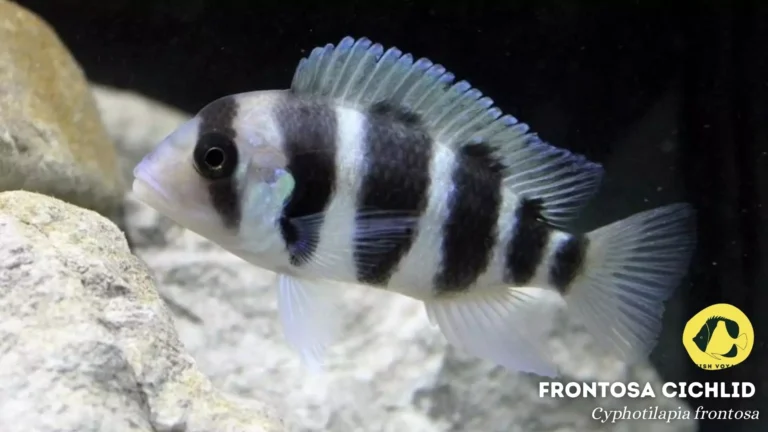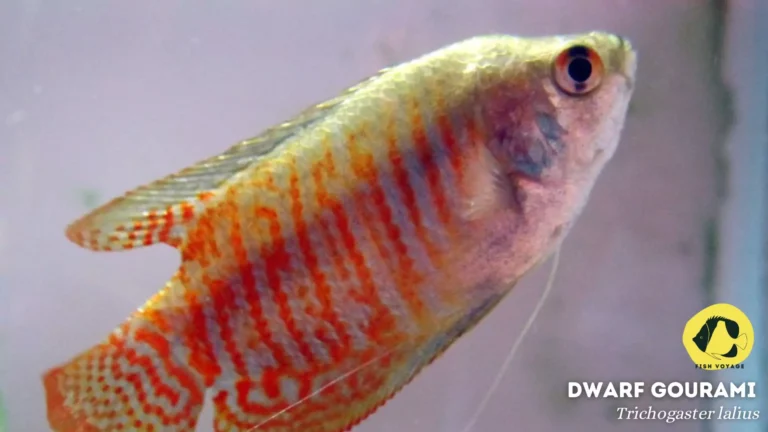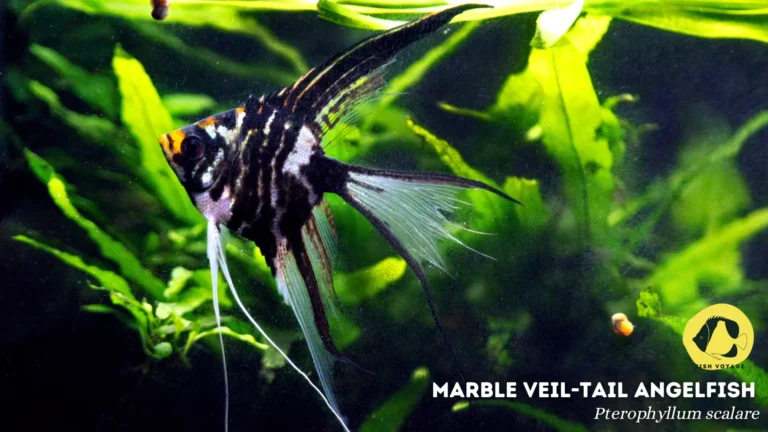Kuhli Loach: Everything You Need To Know!

The Kuhli Loach, scientifically known as Pangio kuhlii, stands as a beloved staple in the realm of freshwater aquariums, captivating hobbyists with its enigmatic charm and unique characteristics. Renowned for its elongated, eel-like body adorned with intricate patterns of alternating bands, this species hails from the serene freshwater habitats of Southeast Asia.
What sets the Kuhli Loach apart is not merely its striking appearance but also its endearing behavior, often observed darting playfully amidst the substrate or seeking refuge within the shelter of aquatic foliage. Whether admired for its tranquil demeanor or cherished for its role in fostering vibrant aquatic ecosystems, the Kuhli Loach remains a cherished addition to any aquarist’s collection, promising both aesthetic allure and a glimpse into the captivating world of tropical fishkeeping.
Appearance and Characteristics
Distinctive Physical Attributes
- Kuhli Loaches are renowned for their elongated, serpentine body shape, resembling miniature eels, which adds a touch of elegance to any aquarium setting.
- Their slender form is complemented by a series of alternating dark and light bands that traverse the length of their body, creating a visually captivating pattern reminiscent of a delicate mosaic.

Varied Coloration and Patterns
- While the predominant coloration of Kuhli Loaches typically ranges from shades of brown to olive, their bands may exhibit subtle variations, showcasing hues of black, gold, or even pink, imparting a sense of individuality to each specimen.
- The intricate patterning of these bands not only serves as a form of camouflage in their natural habitat but also adds to their aesthetic appeal, making them a prized addition to community aquariums.
Distinctive Behavior and Adaptations
- Despite their diminutive size, Kuhli Loaches possess a spirited demeanor, often engaging in playful antics as they navigate the aquarium substrate in search of food or shelter.
- Their affinity for burrowing beneath sand or gravel substrates and seeking refuge among aquatic vegetation reflects their instinctual behavior in the wild, where they inhabit shallow, slow-moving waters characterized by abundant hiding spots.
- Kuhli Loaches are also known for their gregarious nature, exhibiting a preference for shoaling and thriving in the company of their own kind, fostering a sense of camaraderie and social cohesion within the aquarium community.
Unique Adaptations for Survival
- Adapted to their benthic lifestyle, Kuhli Loaches possess specialized anatomical features, such as underslung mouths and tactile barbels, which aid in foraging for food amidst the substrate and detecting sensory cues in their environment.
- Their nocturnal habits further enhance their adaptability, allowing them to navigate low-light conditions with ease and evade potential predators while maximizing opportunities for feeding and exploration under the cover of darkness.
In summary, the Kuhli Loach’s distinctive appearance, engaging behavior, and unique adaptations underscore its status as a captivating addition to freshwater aquariums, offering both aesthetic appeal and a fascinating glimpse into the intricacies of aquatic life.
Natural Habitat
Origins in Southeast Asian Waterways
- Kuhli Loaches are indigenous to the lush freshwater ecosystems of Southeast Asia, where they inhabit a diverse array of habitats ranging from slow-moving streams and tributaries to densely vegetated riverbanks and flooded forest floors.
- These waterways, nestled amidst the verdant landscapes of countries such as Indonesia, Malaysia, and Thailand, provide the perfect backdrop for the Kuhli Loach’s secretive and adaptive lifestyle.
Preference for Sheltered Environments
- Within their native habitats, Kuhli Loaches gravitate towards areas with ample cover and shelter, such as submerged root systems, fallen leaves, and tangled vegetation, where they can seek refuge from predators and forage for food undisturbed.
- The presence of submerged driftwood and rocky outcrops further enhances their habitat, offering additional hiding spots and opportunities for exploration.
Optimal Environmental Conditions
- Kuhli Loaches thrive in environments characterized by stable water parameters, including a neutral to slightly acidic pH ranging from 6.0 to 7.5, and a temperature range of 75°F to 82°F (24°C to 28°C).
- Soft to moderately hard water with a dH range of 5 to 12 is preferred, mirroring the conditions found in their native habitats and promoting overall health and vitality.
Substrate Preferences and Burrowing Behavior
- The substrate composition plays a crucial role in replicating the natural habitat of Kuhli Loaches, with fine sand or smooth gravel substrates mimicking the sandy riverbeds and muddy bottoms they inhabit in the wild.
- Kuhli Loaches are adept burrowers, utilizing their slender bodies and specialized mouthparts to excavate shallow tunnels within the substrate, where they can retreat during periods of rest or concealment.
In essence, understanding the natural habitat of Kuhli Loaches is essential for recreating an authentic and enriching environment within the aquarium, ensuring the health, well-being, and natural behaviors of these fascinating freshwater inhabitants.
Tank Requirements
Appropriate Tank Size
When housing Kuhli Loaches, it’s essential to provide adequate space to accommodate their active and social nature. A minimum tank size of 20 gallons (75 liters) is recommended for a small group of Kuhli Loaches, with larger tanks offering even more room for natural behaviors and exploration.
Effective Filtration System
- Maintaining pristine water quality is paramount for the health and well-being of Kuhli Loaches. A reliable filtration system, such as a sponge filter or canister filter, should be employed to effectively remove debris and maintain optimal water parameters.
- Regular water changes, typically ranging from 20% to 30% every 1-2 weeks, are also essential for preventing the buildup of toxins and maintaining water clarity.
Strategic Aquascaping and Planting
- Creating a well-planted aquarium not only enhances the aesthetic appeal but also serves practical purposes for Kuhli Loaches. Live plants, such as Java fern, Anubias, and Vallisneria, provide essential cover and refuge while contributing to water quality through natural filtration.
- Additionally, the presence of floating plants or surface vegetation helps diffuse lighting and create shaded areas, mimicking the dappled sunlight of their natural habitat and reducing stress levels.
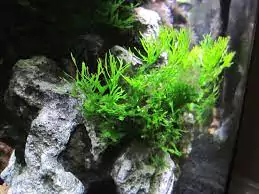
Hiding Places and Cover
- Kuhli Loaches are nocturnal by nature and rely on hiding places to feel secure during the day. Incorporating a variety of hiding spots, such as caves, driftwood, and PVC pipes, ensures that Kuhli Loaches have ample opportunities to retreat and exhibit natural behaviors.
- Naturalistic décor, such as smooth rocks and hollowed-out coconut shells, also provides additional shelter and enrichment, encouraging Kuhli Loaches to explore and interact with their environment.
By adhering to these guidelines for tank setup and maintenance, aquarists can create a thriving and harmonious environment for Kuhli Loaches, fostering optimal health, behavior, and longevity in captivity.
Feeding Habits
Omnivorous Nature
Kuhli Loaches exhibit a versatile and omnivorous diet, consuming a variety of food sources in their natural habitat. This adaptability extends to captivity, where they readily accept a diverse range of foods to meet their nutritional needs.
Preference for Live and Frozen Foods
- While Kuhli Loaches will consume dry or prepared foods, they exhibit a strong preference for live or frozen fare, which closely resembles their natural diet and stimulates their natural hunting instincts.
- Live foods such as bloodworms, brine shrimp, and blackworms are eagerly sought after by Kuhli Loaches, providing essential nutrients and enrichment.
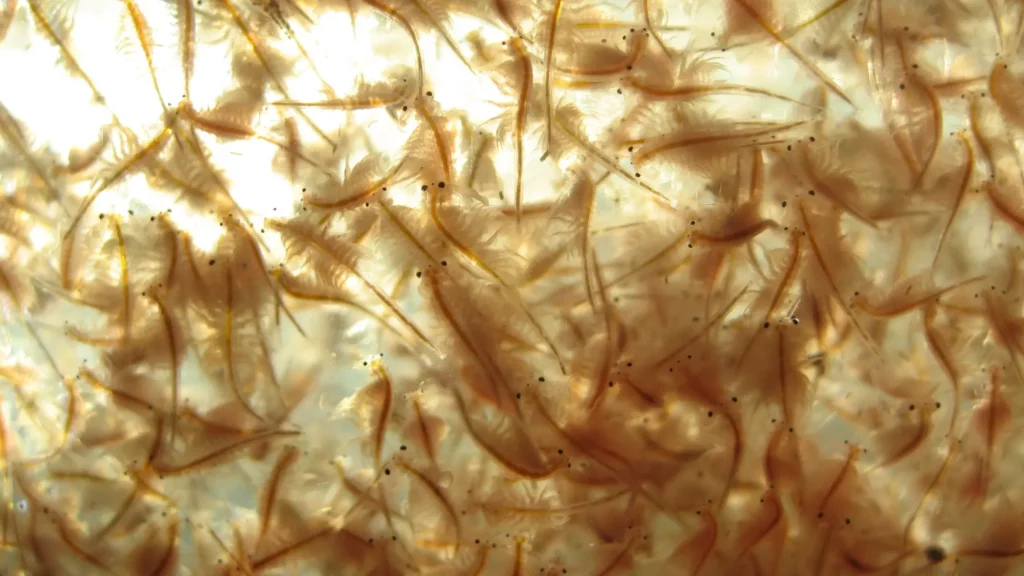
Well-Rounded Diet Recommendations
- To ensure a well-rounded and balanced diet for Kuhli Loaches, it’s essential to offer a variety of high-quality sinking pellets and granules specifically formulated for bottom-dwelling fish.
- Supplementing their diet with occasional feedings of live or frozen foods, such as bloodworms, brine shrimp, and daphnia, provides essential protein and vitamins while promoting natural foraging behaviors.
- Additionally, blanched vegetables such as zucchini, cucumber, and spinach can be offered as occasional treats, providing fiber and essential micronutrients.
Feeding Frequency and Portions
- Kuhli Loaches are relatively small fish with modest appetites, so it’s important not to overfeed them. Offer small, frequent feedings throughout the day, ensuring that all food is consumed within a few minutes to prevent overfeeding and water quality issues.
- Pay attention to the feeding behavior of Kuhli Loaches and adjust the amount and frequency of feedings accordingly, taking into account factors such as water temperature and activity levels.
By incorporating a diverse array of foods into their diet and offering appropriate portions and frequencies, aquarists can ensure that Kuhli Loaches receive the essential nutrients they need to thrive and flourish in the aquarium environment.
Behavior and Compatibility
Shoaling Behavior and Social Dynamics
- Kuhli Loaches are inherently social creatures, exhibiting a strong preference for shoaling and thriving in the company of their own kind. In the wild, they form tight-knit groups, relying on safety in numbers to navigate their environment and evade potential predators.
- Within the confines of the aquarium, Kuhli Loaches display communal behaviors, often observed schooling together or engaging in synchronized movements as they explore their surroundings.
Peaceful Temperament and Interactions
- Renowned for their gentle disposition, Kuhli Loaches are among the most peaceful inhabitants of the freshwater aquarium, rarely displaying aggression towards tankmates or causing undue stress within the community.
- Their docile nature makes them well-suited for community tanks, where they coexist harmoniously with a diverse array of fish species, contributing to a tranquil and balanced ecosystem.
Compatibility with Other Fish Species
- When selecting tankmates for Kuhli Loaches, it’s crucial to prioritize compatibility and temperament to ensure a harmonious cohabitation. Non-aggressive, bottom-dwelling species are ideal companions, as they share similar habitat preferences and pose minimal risk of territorial disputes.
- Popular tankmates for Kuhli Loaches include peaceful community fish such as tetras, rasboras, gouramis, and small corydoras catfish, which complement their calm demeanor and occupy different levels of the aquarium.
Avoiding Aggressive Tankmates
- It’s essential to avoid housing Kuhli Loaches with aggressive or predatory species that may harass or prey upon them. Aggressive cichlids, large barbs, and predatory fish such as puffers and larger catfish should be avoided to prevent stress and potential harm to the loaches.
- Additionally, caution should be exercised when selecting bottom-dwelling species with similar dietary preferences to ensure fair competition for food and minimize potential conflicts.
By selecting compatible tank mates and providing a conducive environment for social interaction, aquarists can foster a thriving and harmonious community aquarium that showcases the peaceful nature and social dynamics of Kuhli Loaches.
Breeding and Reproduction
Common Health Issues
Parasitic Infections
- Kuhli Loaches are susceptible to parasitic infections such as Ich (Ichthyophthirius multifiliis) and skin flukes (Gyrodactylus spp. and Dactylogyrus spp.), which can cause symptoms including white spots, flashing behavior, and lethargy.
- Additionally, internal parasites such as nematodes and tapeworms may pose health concerns if left untreated, leading to digestive issues and weight loss.
Bacterial Diseases
- Bacterial infections, such as fin rot (caused by Aeromonas spp. and Pseudomonas spp.) and bacterial ulcers (caused by Flavobacterium spp.), can afflict Kuhli Loaches, resulting in frayed fins, lesions, and discoloration.
- Poor water quality and stressors such as overcrowding or aggressive tank mates can increase susceptibility to bacterial diseases.
Tips for Disease Prevention and Water Quality
Maintain Optimal Water Parameters
- Regular monitoring and maintenance of water quality parameters such as temperature, pH, ammonia, nitrite, and nitrate levels are essential for preventing stress and minimizing the risk of disease.
- Aim for a stable pH range of 6.0 to 7.5 and maintain ammonia and nitrite levels at zero ppm through adequate filtration and regular water changes.
Quarantine New Additions
Quarantining new fish additions before introducing them to the main aquarium helps prevent the spread of diseases and parasites. A quarantine period of at least two weeks allows for observation and treatment if necessary before integration.
Provide a Balanced Diet and Varied Nutrition
Offering a nutritious and varied diet enhances the overall health and immune system of Kuhli Loaches, making them more resilient to disease. High-quality sinking pellets, supplemented with occasional live or frozen foods, provide essential nutrients and promote natural foraging behaviors.
Minimize Stress and Maintain a Peaceful Environment
- Minimize stressors such as sudden changes in water parameters, overcrowding, or aggressive tankmates, as stress weakens the immune system and increases susceptibility to disease.
- Providing ample hiding places and cover, such as caves, plants, and driftwood, helps Kuhli Loaches feel secure and reduces stress levels.
By implementing proactive measures for disease prevention and maintaining optimal water quality, aquarists can help ensure the health and well-being of Kuhli Loaches in the aquarium environment.
Conclusion
In conclusion, Kuhli Loaches stand as captivating inhabitants of freshwater aquariums, captivating hobbyists with their elegant appearance, peaceful demeanor, and fascinating behaviors. From their elongated bodies adorned with intricate patterns to their preference for shoaling and gentle interactions with tankmates, Kuhli Loaches add depth and character to any aquatic setup. By providing a well-appointed environment that mirrors their natural habitat, offering a varied and nutritious diet, and prioritizing disease prevention measures, aquarists can ensure the health and happiness of these enchanting fish. We encourage readers to share their own experiences and insights into keeping Kuhli Loaches thriving in the aquarium, fostering a community of knowledge and appreciation for these beloved aquatic companions.
Additional Resources
Books for Further Reading
- Freshwater Aquariums for Beginners by Walter James offers comprehensive insights into all aspects of freshwater aquarium setup, including information on fish species like Kuhli Loaches.
Recommended Products
- Sinking Pellets: TetraColor Tropical Flakes designed specifically for bottom-dwelling fish like Kuhli Loaches, providing essential nutrients for optimal health and vitality.
- Aquarium Filtration System: Tetra Whisper Power Filter to maintain pristine water quality, ensuring the well-being of Kuhli Loaches and other aquarium inhabitants.
- Live and Frozen Foods: Live and Frozen Foods such as Tetra Bloodworms, Tetra Brine Shrimp, and Generic Blackworms to supplement the diet of Kuhli Loaches and encourage natural foraging behaviors.
By exploring these additional resources and utilizing recommended products, aquarists can enhance their knowledge and provide the best possible care for Kuhli Loaches in the aquarium.
Frequently Asked Questions (FAQs)
1. What size tank do Kuhli Loaches need?
Kuhli Loaches require a minimum tank size of 20 gallons to thrive, with larger tanks providing more space for natural behaviors and social interactions among shoals.
2. Are Kuhli Loaches compatible with other fish species?
Yes, Kuhli Loaches are generally peaceful and compatible with a variety of non-aggressive community fish species. They coexist well with small tetras, rasboras, gouramis, and peaceful bottom-dwelling species like Corydoras catfish.
3. What do Kuhli Loaches eat?
Kuhli Loaches are omnivorous and will accept a variety of foods. They prefer live or frozen foods such as bloodworms, brine shrimp, and blackworms but can also be fed high-quality sinking pellets and occasional blanched vegetables.
4. How can I prevent diseases in Kuhli Loaches?
Disease prevention in Kuhli Loaches involves maintaining optimal water quality through regular water changes and filtration, quarantining new fish additions, providing a balanced diet, and minimizing stressors such as overcrowding and aggressive tankmates.
5. Do Kuhli Loaches need hiding places in the aquarium?
Yes, providing ample hiding places and cover, such as caves, driftwood, and live plants, is essential for the well-being of Kuhli Loaches. These secretive fish feel secure when they have places to retreat and explore, reducing stress levels and promoting natural behaviors.

